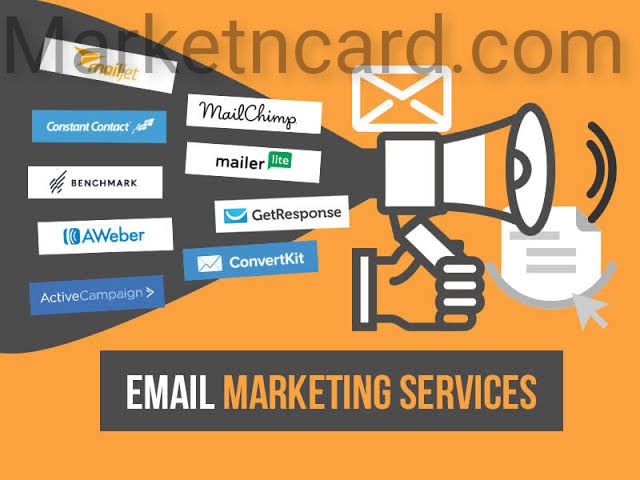Building an email list is a necessary step for anyone looking to grow their business. Whether you’re using it to regularly send your latest blog posts, announce your latest product releases, or promote affiliate offers, the list is crucial in generating new leads and capitalizing on existing ones. The article will highlight the 6 best list-building tools for 2022.
What is a List Building?
A List Building is a process of creating a list of potential customers or subscribers for a business. This can be done through various means such as online forms, surveys, or even face-to-face interactions. The purpose of a List Building is to generate leads that can be converted into customers or subscribers.
READ MORE: How to Adapt to iOS 15 Updates Affecting Email Marketing
There are many different List Building tools available, each with its own advantages and disadvantages. Some of the most popular List Building tools include:
- Online Forms: Online forms are an easy and effective way to collect information from potential leads. They can be embedded on websites or shared through social media or email campaigns. However, online forms can be difficult to customize and may require lead capture software to be installed on the website.
- Surveys: Surveys are another popular method of collecting information from potential leads. They can be used to collect contact information, demographic data, or even product preferences. Surveys can be administered through online platforms, email, or even in person. However, surveys can be time-consuming to create and administer, and may require specialized software to collect the data.
- Face-to-Face Interactions: Face-to-face interactions are a great way to build relationships with potential leads. This can be done through events, trade shows, or even simple conversation. However, face-to-face interactions can be costly and time-consuming, and may require the use of trained sales staff.
- Telemarketing: Telemarketing is a type of direct marketing that uses the telephone to contact potential leads. Telemarketers will typically make a sales pitch to the lead and attempt to sell a product or service. However, telemarketing can be expensive and time-consuming, and may require the use of specialized software to make calls and track results.
Types of List Building Tools
There are several types of list-building tools that can be used to gather leads.
One type of list-building tool is a web form. Web forms can be embedded on a website or blog and used to collect contact information from visitors.
Another type of list-building tool is a pop-up form. Pop-up forms appear on websites and offer visitors the chance to sign up for a newsletter or other type of email list.
Social media can also be used as a list-building tool. For example, Facebook allows businesses to create sign-up forms that can be placed on their business page. Twitter also allows businesses to gather leads by creating promoted tweets with a call-to-action to sign up for an email list.
Overall, there are many different types of list-building tools that can be used to gather leads. The most effective tool will vary depending on the business and its target audience.
SEE: How to Use Behavioral Science in Digital Marketing
Cost of Using a List Building Tool
- The cost of using a list building tool can vary depending on the tool you choose. Some tools are free to use, while others may charge a monthly fee.
- The cost of using a list building tool may also depend on the features you need. Some tools offer basic features for free, while others charge for additional features.
- The cost of using a list building tool may also depend on the size of your mailing list. Some tools charge based on the number of subscribers you have, while others have a flat rate regardless of the number of subscribers.
- Overall, the cost of using a list building tool can vary depending on your needs. However, there are many affordable options available that can provide you with the features you need to grow your mailing list.
Comparing Foursquare, MailChimp, Constant Contact and Get Response
Comparing the four most popular list-building tools can be a daunting task. However, it is important to compare them in order to find the best tool for your needs.
Foursquare is a great tool for building lists of potential customers. It allows you to target specific locations and track customer behavior. This information can be very valuable for marketing purposes.
MailChimp is another popular tool for building lists. It offers a variety of features, including the ability to segment your list and send targeted messages. MailChimp also has a very user-friendly interface.
Constant Contact is another popular list-building tool. It offers many of the same features as MailChimp, but it also has some unique features, such as the ability to create surveys and polls. Constant Contact also has a very user-friendly interface.
Get Response is another popular tool for building lists. It offers many of the same features as MailChimp and Constant Contact, but it also has some unique features, such as the ability to automate list-building tasks. Get Response also has a very user-friendly interface.
Conclusion
With so many list-building tools on the market, it can be hard to know which one is right for you. We hope our list of the 6 best list-building tools for 2022 has helped you narrow down your options and find the perfect tool for your needs. Remember to consider your budget, your audience, and your goals when choosing a list-building tool, and you’ll be sure to find the perfect fit for your business.
READ MORE: Black Friday Email Marketing Ideas to Skyrocket Your Sales – APPLY NOW
FAQ
Why should you build a list?
There are several reasons why you should build a list. First, a list helps you to keep track of your customers and potential customers. This is important because it allows you to follow up with them and ensure that they are satisfied with your product or service.
Second, a list can help you to generate leads. You can use your list to send out special offers or announcements to potential customers. This can help you to increase your customer base.
Third, a list can help you to stay organized. By keeping a list of your customers, you can easily keep track of who has purchased what products or services. This can help you to keep your business running smoothly.
Overall, there are many reasons why you should build a list. A list can help you to keep track of your customers, generate leads, and stay organized.
How can you build a list?
There are a few different ways to build a list. One way is to purchase a pre-built list from a reputable list provider. Another way is to build your own list by collecting data from your website visitors.
If you purchase a pre-built list, you will need to make sure that it is accurate and up-to-date. The best way to do this is to check the list against your own customer database. This will ensure that you are only paying for accurate, current data.
If you build your own list, you will need to put together a system for collecting data from your website visitors. This can be done through online forms or by tracking website activity. Once you have collected this data, you will need to clean it up and organize it into a usable format. This can be time-consuming, but it will be worth it in the end because you will have a high-quality list that you built yourself.
10 email marketing best practices
There are a number of different tools that you can use to build your email list. Some of the most popular options include Aweber, GetResponse, and MailChimp.
Each of these tools has its own set of features and benefits. Aweber, for example, offers a wide range of customizable templates, while GetResponse provides a more user-friendly interface.
SEE: Bulk Email Marketing: Tips You Should Be Using Right Now
It is important to choose a tool that will work best for your needs. If you are just starting out, you may want to choose a tool that is easy to use and doesn’t require a lot of customization.
Once you have chosen a tool, be sure to read the documentation carefully. This will help you to understand how to use the tool effectively and avoid any common mistakes.





